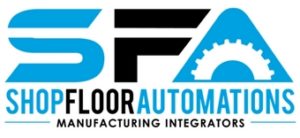“Show me the money!” Those iconic words from the 1996 film, Jerry Maguire, may have been once uttered to prove client-agent commitment, but they also serve as a reminder that products should continually prove value to earn your business. Cloud machine monitoring software, which utilizes Industrial Internet of Things (IIoT) sensors to collect real-time data from your equipment on the shop floor, is no different.
For manufacturers with a variety of aging and newer machines that span manual as well as advanced, 5-axis machining, such a software solution can be a valuable tool to help optimize operations and increase your return on investment (ROI) – particularly as workforce challenges remain pervasive and inflationary pressures weigh on your bottom line. Here are five ways that machine monitoring software can show you the money:
- Identify inefficiencies. With the help of a robust machine monitoring solution, you can identify inefficiencies in your production processes to make improvements and cut costs. One manufacturer knew that operators deployed overrides, but wasn’t aware of how long they were slowing down the machines as a result. Through the tracking of feed rates and overrides within a configurable dashboard in Scytec DataXchange, teams uncovered that machines were operating at 50% of normal speed for an extended period of time, well beyond the time that it should have taken to complete the part. Color coding and messaging added to the dashboard, as well as e-mail and text notifications, alerted key personnel when a slowdown occurred past five minutes to address the issue as it was occurring, thereby preventing unnecessary waste. By monitoring machine performance, communicating key data points and analyzing data, you can identify bottlenecks, downtime and other issues, like lengthy overrides, that are slowing down your operations.
- Predictive maintenance (PdM). You can also identify when maintenance is needed before a breakdown occurs through constant machine monitoring. The tracking of vibration analysis, hours run, oil analysis, thermal imaging and other data inputs can help you determine patterns in machine performance to, ultimately, avoid costly repairs and downtime, while also prolonging the lifespan of your equipment.
- Increase productivity. The visibility gained from machine monitoring software can assist with optimizing your production processes and increasing productivity. You can detect more efficient settings and processes to further reduce cycle times, increase output and maximize your Overall Equipment Effectiveness (OEE).
- Quality control. Machine monitoring software can also help you to improve the quality of your parts. The continuous capture of equipment execution can present real-time warnings as deviations occur to immediately correct the quality issue before the part moves onto the next operation.
- Energy efficiency. As shops continue to seek greener opportunities, equipment monitoring solutions serve to decrease energy costs. High-offending machines and energy usage trends can be pinpointed to implement energy-saving measures and reduce utility bills.
While there’s a number of ways to earn ROI from machine monitoring software, it’s important to have a clear understanding of your goals and exactly how machine monitoring can enable your teams to achieve them. It’s just as important to have the right manufacturing integrator, infrastructure and tools in place to collect and analyze the data, and to have a plan to address how your operations will apply the insights gleaned from monitoring – so your software solution can keep on showing you the money.






